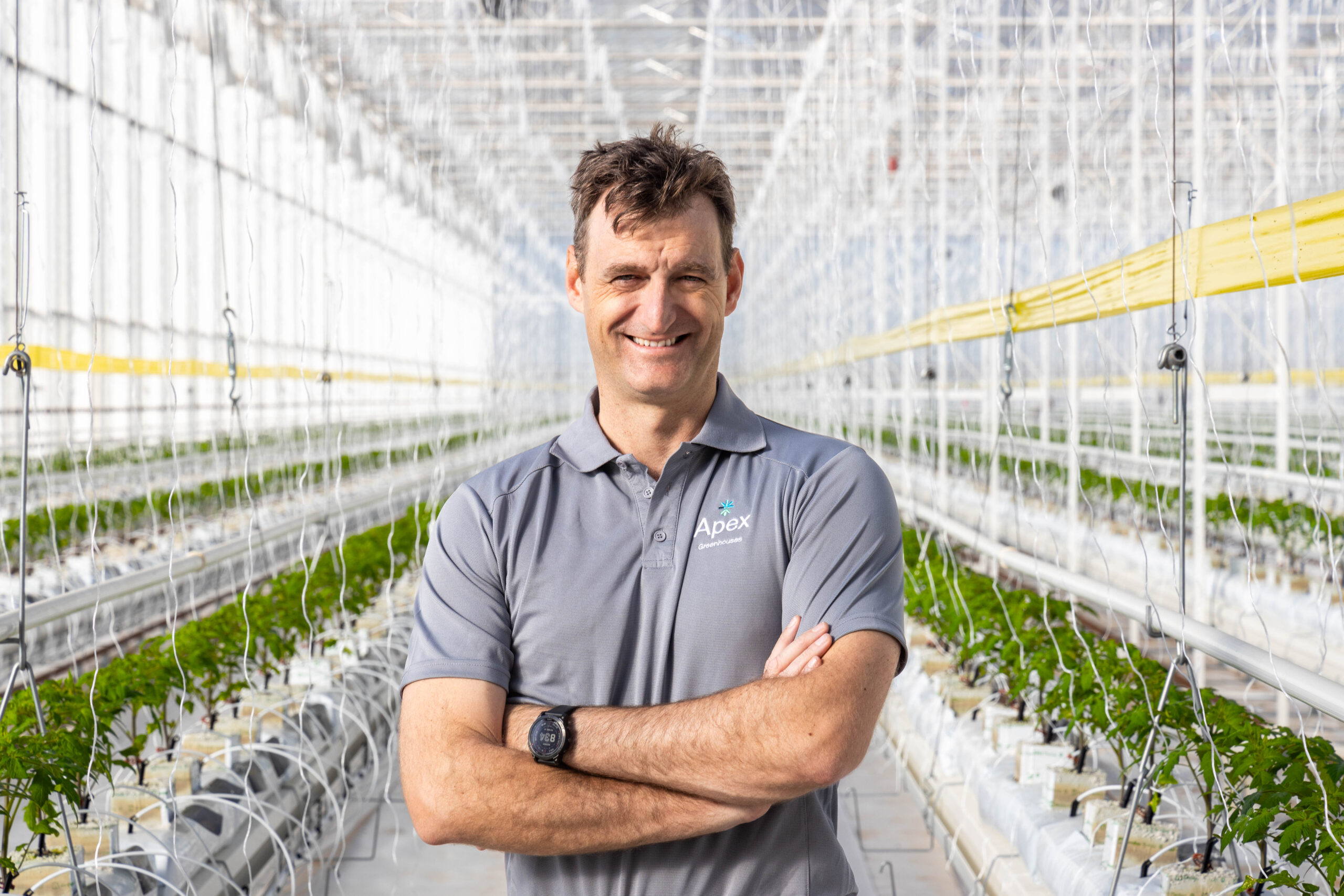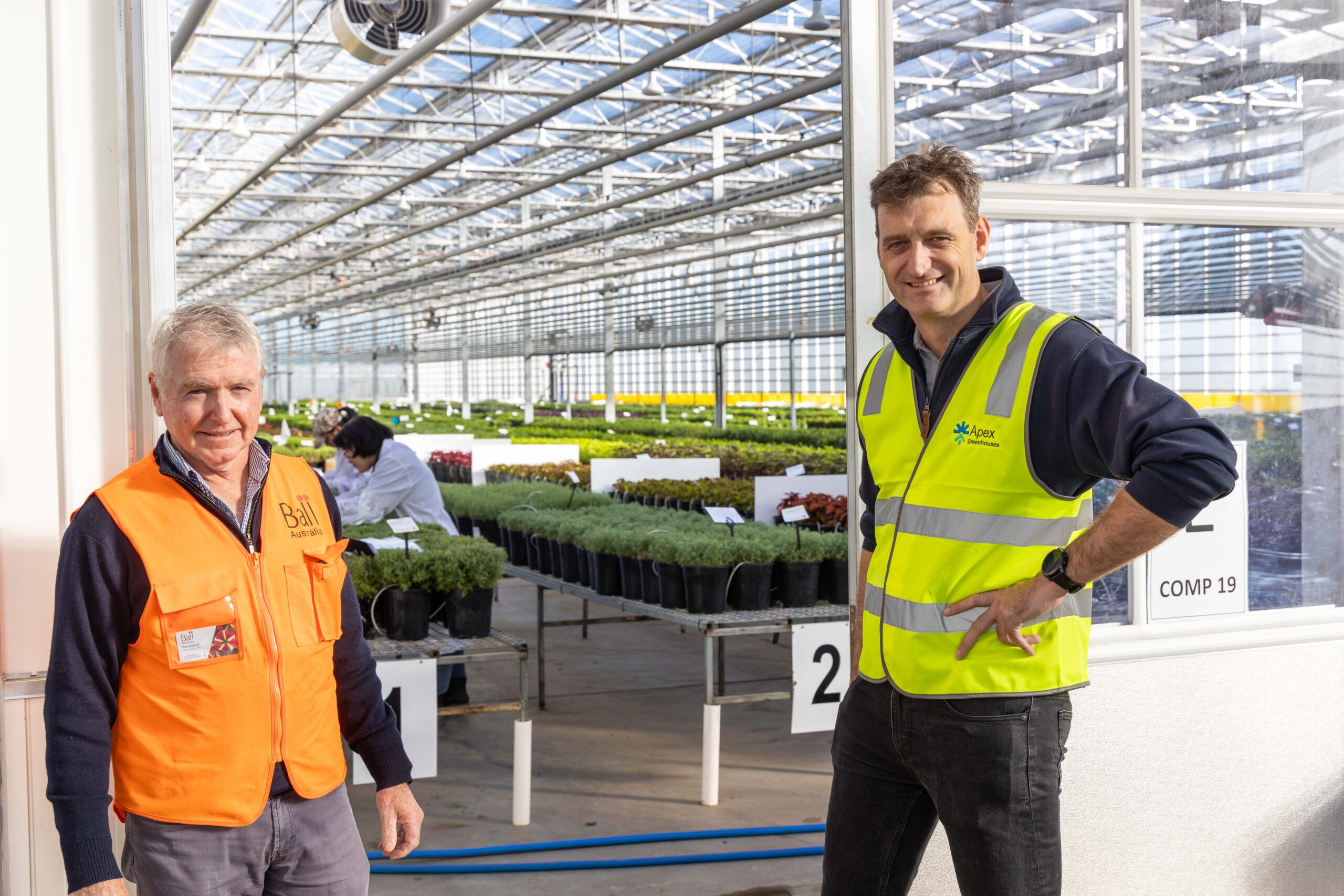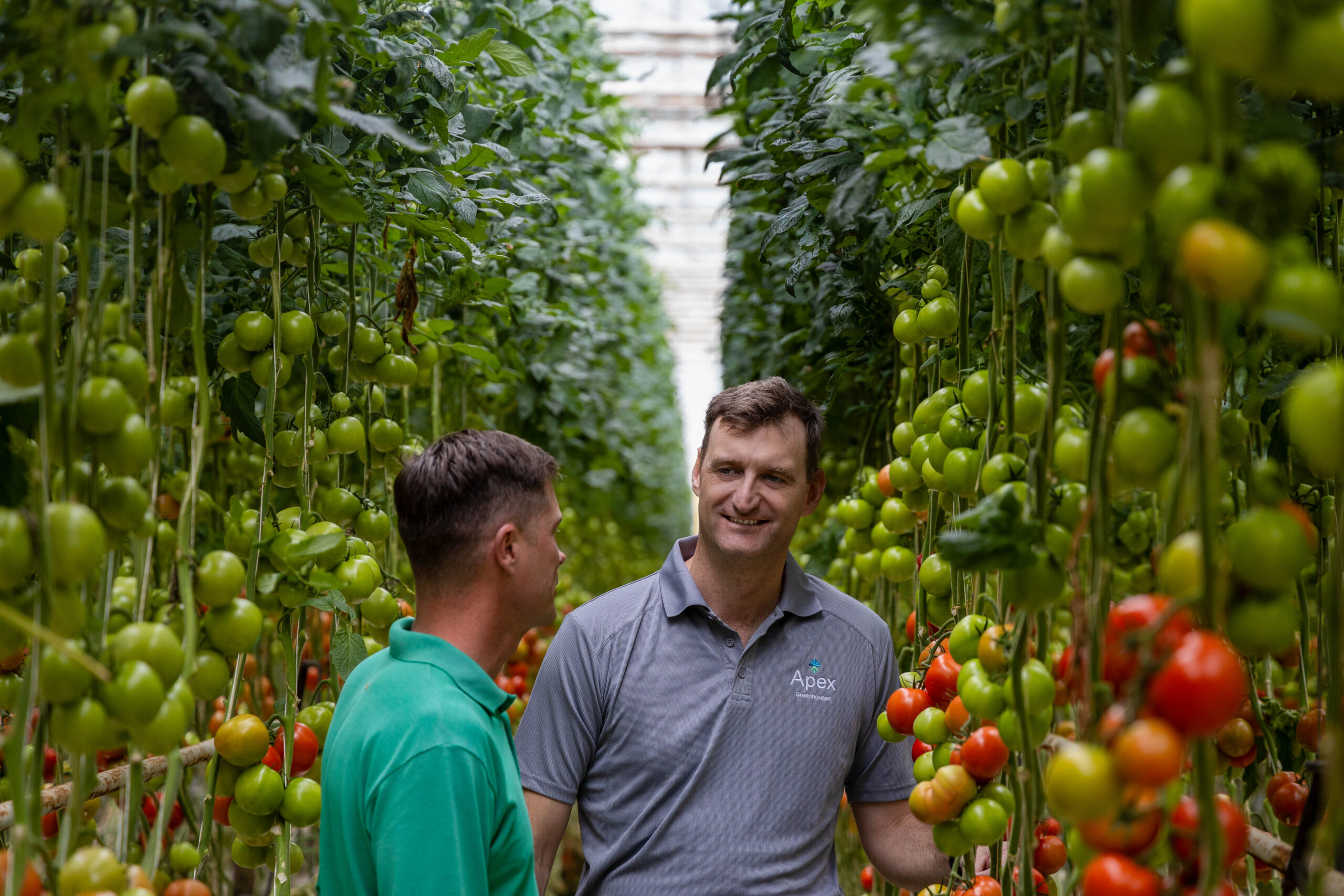From family roots to industry leadership
Apex Greenhouses began in the late 1970s, when Dutch immigrant Leo Faber started designing and manufacturing commercial glasshouse structures in New Zealand, drawing inspiration from the renowned Dutch Venlo style.
In 2008, Leo’s son Folco immigrated to Australia to further grow the business. Today, he leads Apex’s Australian operations, while business partner James Harris oversees the New Zealand side.
We sat down with Folco to talk about his experience inside and outside the business, how Apex operates today, and what’s on the horizon for the company.

Tell us about your background and what led you to become involved in the family business.
I grew up around the business — it was always part of the conversation at home. During school holidays, I helped in the factory and later worked on construction sites during university breaks.
After completing a four-year accounting degree, I’d had enough of the books. I moved to Australia and spent a year working on greenhouse construction sites to save money and travel. I was fortunate to spend 12 months overseas, and when I returned, I decided to relocate to Australia permanently and commit to the family business.
How has hands-on experience shaped your leadership style?
Having hands-on experience has been invaluable for my leadership. I understand what our team is managing on-site because I’ve been there and done it myself. That background helps foster mutual respect. I’ve come from the ground up and have a comprehensive understanding of greenhouse construction and all areas of the business. It means I can lead with insight, empathy, and credibility.

What do clients value most when working with Apex?
Clients particularly value our responsiveness and the confidence that comes with having a local team on the ground. Being able to pick up the phone and speak to someone in their time zone, who understands the local climate, regulations, and construction requirements, makes a big difference.
Safety and compliance are non-negotiables for us. We know what’s required in the Australian and New Zealand construction landscape, and we deliver accordingly. Clients trust us not only for the quality of our products, but also for the way we work — with transparency, consistency, and integrity.
Many of our clients return to work with us again, which says a lot. They know we’ll deliver what we promise, and that trust is what really sets Apex apart.
What advice would you give to a company or organisation looking to build a new research or production greenhouse?
Whether you’re planning a commercial greenhouse or a research facility, the best advice is to engage with us as early as possible in the planning process — it can save you significant time and money. We’ve had clients come to us after already investing in architectural designs, only to find they need to start over once we begin properly scoping the project.
If possible, be transparent about your budget. Having an open conversation early allows us to align on realistic expectations and deliver a solution that works within your parameters.
Most importantly, ensure there’s a clear market for your produce. A greenhouse is a major investment, and having your sales channels in place from the start is key to securing a strong return.

Apex has worked with governments, universities, and commercial growers. Could you share a recent project that you’re particularly proud of and why?
We’re particularly proud of our recent project for Goodness Grown in Tongala, Victoria, our largest single build to date. The project spans four greenhouses over 20 hectares and was delivered in an impressive 10.5 months from signing to practical completion, including design and nine weeks of shipping. It was a tremendous team effort.
At the other end of the scale, a highlight in terms of complexity was a smaller research greenhouse for the University of Sydney. At just 400sqm, the footprint was modest, but the project was highly technical and set on a tight site with significant logistical challenges, such as not being able to bring in shipping containers. It required detailed planning but was incredibly rewarding to deliver.
What role do you see greenhouses playing in the future of food security, climate resilience, and agtech?
I believe greenhouses will play an increasingly critical role in all three areas. Governments around the world are recognising the importance of food security, and supermarkets are demanding year-round supply across more product categories.
As extreme weather events become more frequent, growing produce indoors offers protection from the elements and helps stabilise supply. It reduces volatility in the market and ensures more consistent access to fresh food.
Take tomatoes, for example. A large proportion of Australia’s tomatoes are still field-grown. When there’s a major weather event, like flooding in Queensland, we often see price spikes because much of the crop is lost. In a greenhouse environment, you’re not as exposed to those risks. It’s this kind of resilience and control that makes protected cropping an essential part of the future of agriculture.
